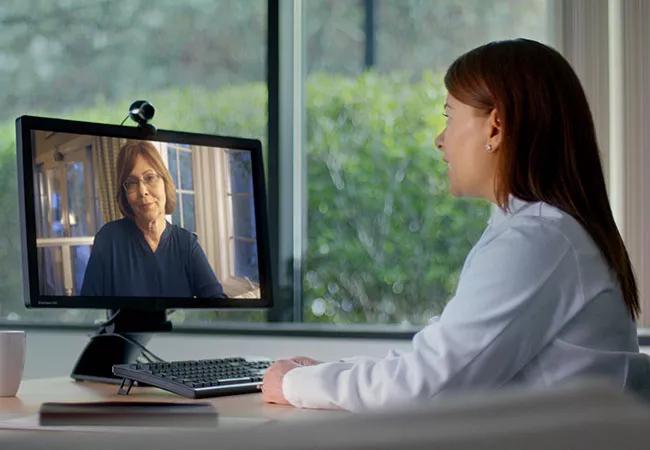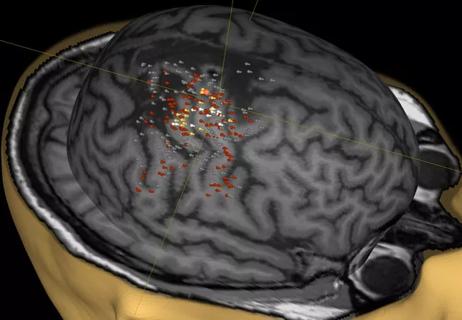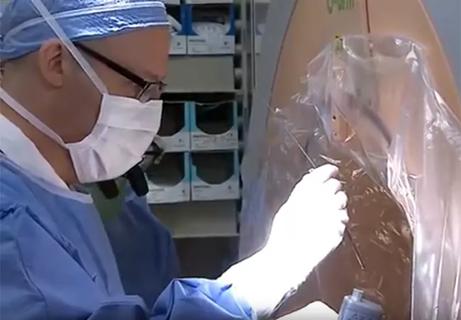Physician reimbursement policy experts join forces with IT and coders to enable digital transformation

Cleveland Clinic has helped pave the way for telehealth during the COVID-19 pandemic with accelerated adoption of virtual visits and rapid scaling of its distance health strategies.
Advertisement
Cleveland Clinic is a non-profit academic medical center. Advertising on our site helps support our mission. We do not endorse non-Cleveland Clinic products or services. Policy
Under direction of Steven Shook, MD, inpatient virtual consultation lead, front-line physicians are working behind the scenes with IT and coders to translate federal telehealth policies and waivers into electronic workflows that are clinician-friendly, while still ensuring proper documentation of care that meets clinical communication needs and supports reimbursement.
On March 30, 2020, the Centers for Medicare and Medicaid Services (CMS), announced sweeping regulatory changes to the help the U.S. healthcare system address the COVID-19 patient surge. This included an unprecedented release of waivers that permitted more widespread use of telehealth with the aim of expanding patient access and reducing transmission of COVID-19.
Part of the new CMS waivers included expansion of inpatient telehealth services, which could help facilitate access to specialist consultation in a contact-restricted environment to reduce the nosocomial spread of SARS-CoV-2 and conserve personal protective equipment (PPE). While telehealth was already being used pre-COVID 19 in ambulatory settings and for selected emergency and inpatient use cases like stroke and intensive care, the broader adoption of inpatient virtual visits was something new for Cleveland Clinic.
To meet this challenge, an inpatient distance health multidisciplinary team was assembled with representation from physicians, nursing, coding, IT and administration. The need for a dedicated telehealth documentation work group was quickly realized. This group, composed of physicians with expertise in coding and clinical informatics, was tasked with creation of new telehealth documentation that facilitated adherence to new billing guidelines to support remote care for hospitalized patients.
Advertisement
According to Allison Weathers, MD, FAAN, Cleveland Clinic’s Associate Chief Medical Information Officer: “One of the biggest challenges was the speed and scope of the regulatory changes coming from CMS, which were changing on a weekly basis at first. While these changes allowed us to continue to provide safe, high quality care to our patients in an innovative way, they were incredibly complex and had to be interpreted in the context of the prior complex reimbursement rules, meaning we needed to understand both systems at once.”
This understanding was mission-critical for Dr. Weathers and the IT and coding teams, since existing electronic workflows for physician documentation and billing designed for face-to-face patient care now needed to be modified to meet the requirements for telehealth. Another need was to create user-friendly documentation templates in the electronic health record that could be used or easily adapted across the different specialty services at Cleveland Clinic.
“With everything that our providers were going through, we knew we couldn’t expect them to also become instant experts on CMS waivers and other regulatory changes. We had to think through how the EHR could be leveraged to allow our providers to put their time and attention on what mattered most — caring for their patients, not knowing the intricacies of documenting and coding of providing virtual care,” states Dr. Weathers.
Dr. Weathers enlisted help from two colleagues with specialized backgrounds in CMS documentation and reimbursement policies: Katina Nicolacakis, MD, Director of Medical Compliance, Billing and Reimbursement for Cleveland Clinic’s Respiratory Institute, and Leslie Wong, MD, Associate Director of Cleveland Clinic’s Medicare Accountable Care Organization and part of Cleveland Clinic’s Glickman Urological and Kidney Institute.
Advertisement
This steering team held daily meetings, including weekends, with their colleagues from IT and coding to analyze the new CMS telehealth waivers and help create new inpatient telehealth documentation and billing templates.
“An overarching theme was to ensure workflows were created that were pragmatic and focused on helping physicians to work with as little disruption to their clinical workflows as possible,” says Dr. Wong, who previously led ICD-10 transition and documentation improvement efforts for the Department of Nephrology and Hypertension.
Dr. Nicolacakis, an advisor to the AMA Relative Value Scale Update Committee (RUC) for the American Thoracic Society, remarks, “We wanted to ensure that the language of CMS was translated accurately into templates that made clinical sense and were compliant.”
The team encountered frequent examples where use of telehealth might result in unintended consequences if users were not aware of all the situational requirements associated with specific types of encounters. The differences between synchronous and asynchronous telehealth encounters and how caregivers decide on what type of telehealth encounter to employ are examples. As a result, templates were kept simple so they could be used across specialties, while the EHR capabilities were leveraged to include “tips” for using the new less familiar services.
According to Dr. Nicolacakis, “The team identified areas of potential risk to compliance and reimbursement and took steps to mitigate them for physicians by designing workflows most consistent with actual hospital practice patterns.”
Advertisement
“What we learned was how invaluable it was for physicians to be involved in how a telehealth strategy is deployed, and to use an interdisciplinary approach to ensure proper documentation and reimbursement, but also good communication between caregivers,” adds Dr. Wong.
The experience of launching telehealth during COVID-19 has demonstrated the ability of Cleveland Clinic as an organization to respond to the healthcare needs of its patients and position its providers to succeed whatever the challenges of the future may hold.
On the challenges faced, Dr. Weathers reflects, “Although this was one small piece of a much larger effort, being able to pull this team together to focus on the documentation and coding pieces allowed our providers to focus on doing what they do best — providing world class care to our patients.”
Advertisement
Advertisement

New guidance on penetrating head injuries, and noninvasive diagnostics get a nod in austere settings

A noninvasive approach to map eloquent areas before surgery

Q&A with a psychiatrist in Cleveland Clinic’s Transgender Surgery and Medicine Program

‘Go! To Sleep’ CBT-I program brings insomnia therapy close to home

Pilot program expedites patient transfers by removing precertification requirements

Study signals potential for enhanced patient monitoring

First-ever natural history study of a devastating mitochondrial disease

Podcast and video explain Dr. Andre Machado’s pioneering procedure